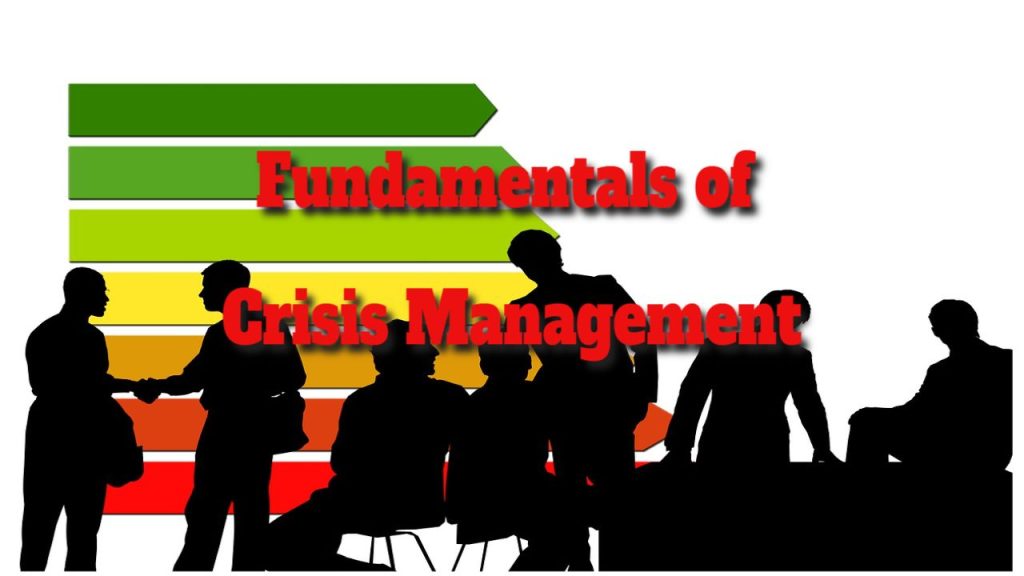Fundamentals of Crisis Management
All crisis management strategies, plans, and processes are built around the question “What is the worst that could happen?”.
Individuals, teams, companies, corporations, or governments cannot plan or prepare for disasters if they look at the world through rose-coloured glasses. Even Nevertheless, many people choose to avoid thinking about worst-case scenarios and instead hope for the best.
A crisis can be created by various factors, many of which are wholly unexpected to corporate executives. These possibilities include the death of a CEO, a rogue employee, financial mismanagement, and various other events.
To establish and train a crisis management team, team leaders, managers, and employees must work together and follow instructions. Furthermore, there must be adequate planning.
appropriate training, and a daily flow of information that is clear.
Preparation
Creating what-if scenarios or worst-case models based on specific sectors and their needs is one of the most effective ways to prepare any organisation, corporation, business, or individual for any type of disaster.
Ask queries like this:
What kind of environment could a specific circumstance grow in?
Will anyone be able to spot warning indications that something is wrong?
How can people fix the situation once they’ve realized something is wrong?
Additional questions could include:
Could a specific crisis escalate? How fast?
How will a specific crisis disrupt or interfere with regular corporate operations?
If your company or organisation had an issue, would the national news media or the government’s regulatory bodies receive notification? (This is not intended to imply that one area of the economy, business, or organisation is more essential than another; however, negative public relations, media exposure, criticism, and reputational damage can all seriously harm a company’s reputation.
Create numerous situations, each with a distinct probability. Sometimes, the possibility of something happening is relatively high, and other times, it is quite low.
Although it is not advisable to plan for improbable situations, managers and administrators should thoroughly research their industry, firm, and corporate departments in order to assess and analyse prospective hazards.
Consider the likelihood of a crisis or emergency, then assign numerical values to the resulting consequences. For example, a scenario that is exceedingly improbable to occur may be assigned a score of one, but other situations with a genuine possibility or chance may be assigned a score of 10.
Implementing such protocols will help managers and supervisors organise themselves so that potential difficulties can be identified before they become crises.
Managers and supervisors must develop and carry out emergency or evacuation plans during natural disasters like fires, earthquakes, storms, or floods. These plans are intended to safeguard not only employees but also property, as well as to prevent situations like explosions, gas leaks, and other potential hazards that may arise as a result of a natural catastrophe.
Now is the time to review the damage estimates that have been presented. Don’t sit around waiting for a calamity to occur.
Compliance
When estimating the likelihood of a crisis in any particular situation, human response must be considered. For example, in order to preserve accountability and responsibility, one must understand and follow the norms and rules set by the relevant federal, state, and municipal governments.
Employees who follow industrial, corporate, or commercial regulations can ensure the safety and well-being of all parties concerned. For example, smoking in an environment containing potentially dangerous vapours or chemicals endangers not only other employees but also the organization’s own survival.
Managers and supervisors are responsible for ensuring that staff follow all safety regulations and guidelines.
If a company or manager fails to meet such standards, they risk facing a crisis that could result in financial losses, legal action, or reputational damage.
Training and Information Management
Do you remember when you were in school, there were frequent fire alarms, and you had to wait in a queue at a specific door before moving your classroom to a specific area on the playground or field?
This is an excellent example of how crisis management training may be received in a single setting. In the event of an emergency, the procedure is repeated to ensure that both kids and teachers receive the greatest possible outcome from the circumstance.
The crisis management strategy must include training and information about emergency evacuation and response methods.
Every individual, employee, manager, or supervisor, from the caretaker to the CEO of an organisation, must have documentation outlining physical crisis management methods and evacuation policies for their place of business.
The supply of at least the foundations of emergency management capability should be the primary priority for all employers, regardless of size. Every employee should be supplied with an evacuation plan as well as procedures for dealing with crises or natural disasters.
To effectively steer the flow of crisis preparedness and management, information managers, people supervisors, and human resource departments should play the lead role.
Planning Basics
The practice of formulating a strategy in advance is a critical component of crisis management. The entire study must include a list of potential difficulties and worst-case scenarios, despite the fact that it is impossible to anticipate all possible outcomes.
Planning for a range of situations can involve a number of steps, including:
The formation of a crisis management or planning team.
Create a plan of quick action.
The plan is frequently assessed and updated.
Planning entails organising the abilities, experiences, and perspectives of a diverse group of people to satisfy the needs of guaranteeing employee safety, being responsible to the community, and safeguarding the environment.
The Article Fundamentals of Crisis Management Appeared First On Survival Avenue.
The post Fundamentals of Crisis Management appeared first on Survival Bite.
The Article Fundamentals of Crisis Management was found on https://limitsofstrategy.com


